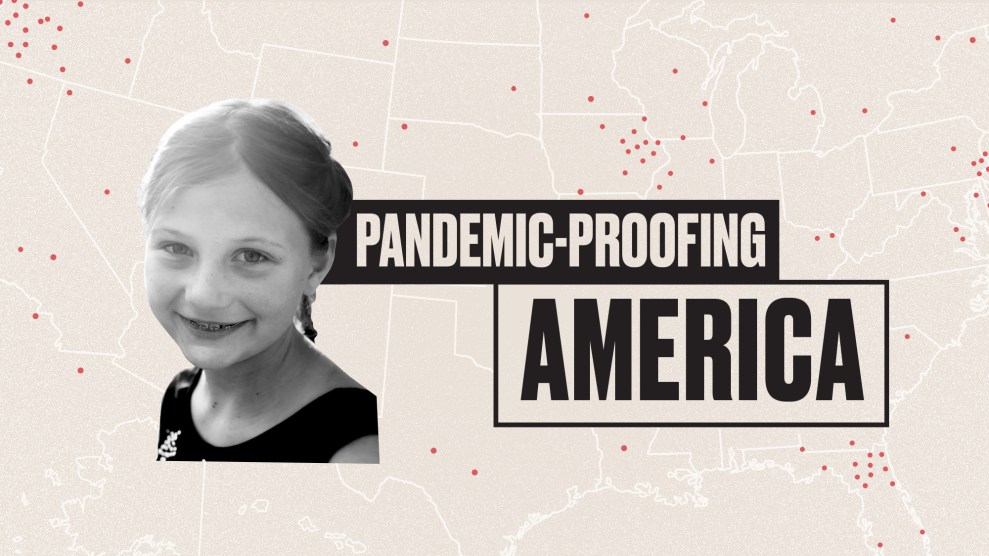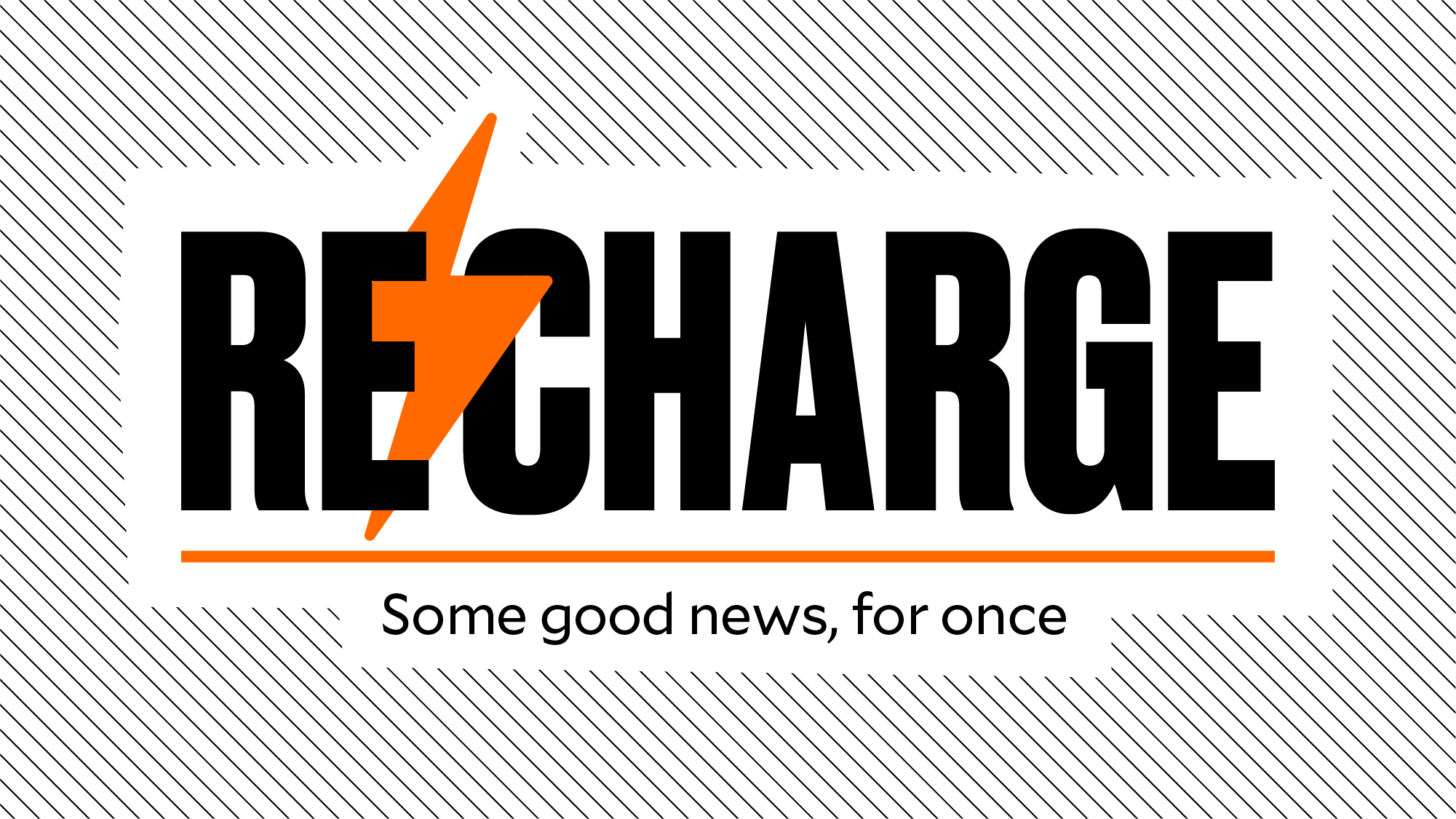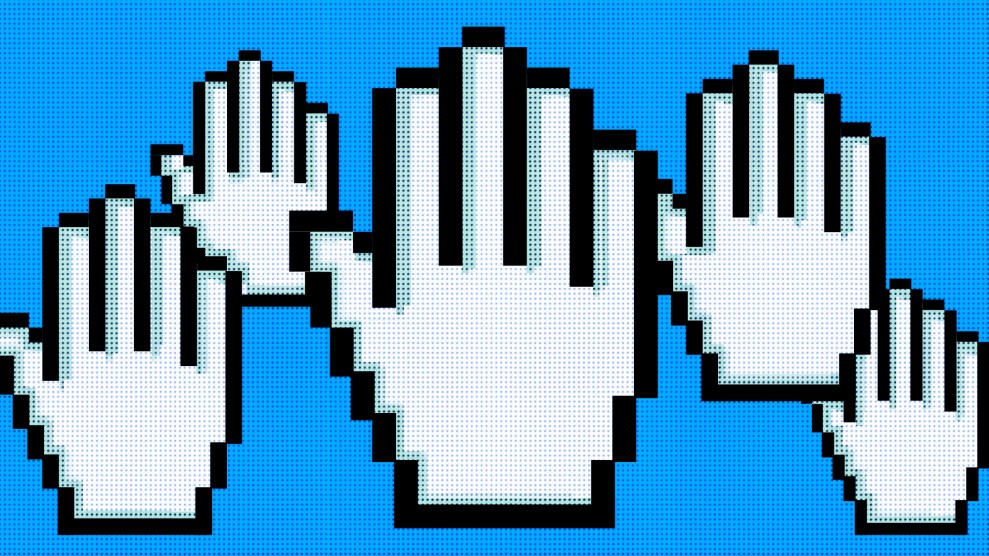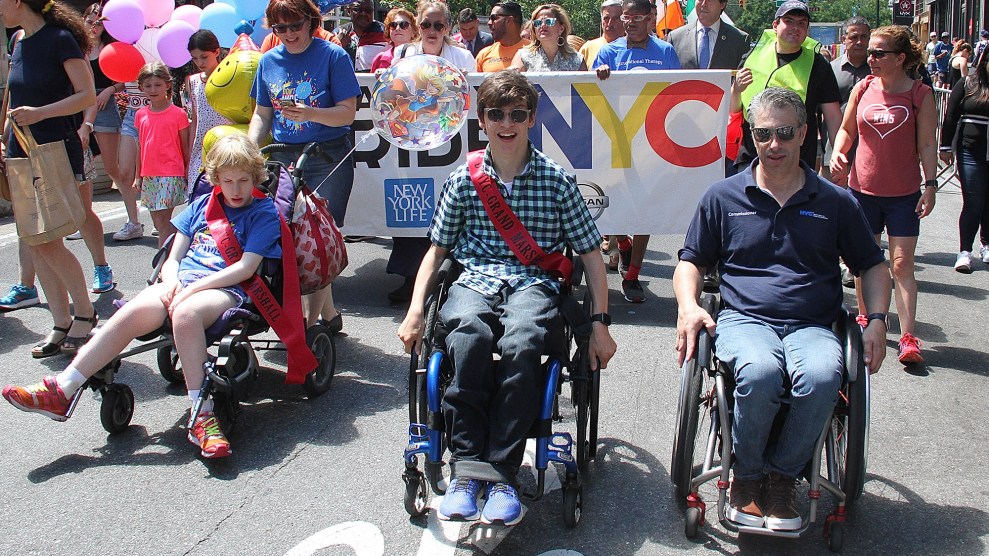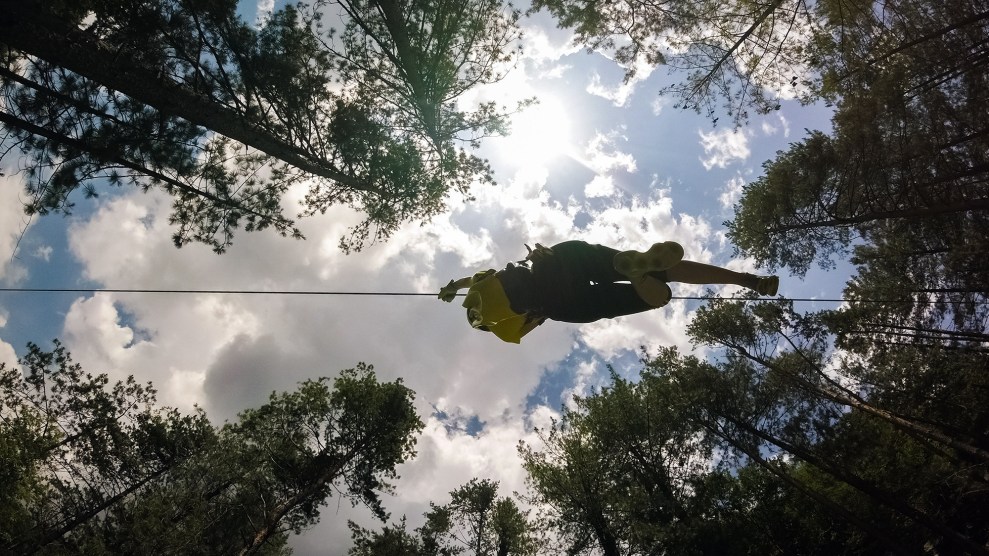
Amazing Aerial/ZUMA
Kelsey Schwartz was a hyperactive kid, always running around and climbing on things. With strong internal cues telling her to move her body, there were times when, if she didn’t get enough exercise during the day, she would get a maddening urge to fidget her legs—a disorder known as “restless leg syndrome”—when trying to fall asleep at night. As a kid, the treatment she devised was to go outside and ride her Razor scooter in circles around the cul-de-sac out front, trying to tire her legs out so that she could fall asleep.
I remember looking out the window of my childhood bedroom and seeing Kelsey scootering in the dark, around and around and around. Because, you see, Kelsey is my little sister. I am four years older than she and wasn’t surprised when hyperactive little Kelsey grew into hyperactive big Kelsey and decided to pursue a career in occupational therapy. For the past five of her 27 years, Kelsey has been working with children with disabilities at clinics and camps. Now, she’s beginning her second and final year of her master’s degree in occupational therapy.
The field Kelsey has chosen emerged from two 19th century movements: the Moral Treatment Movement, which pushed for more compassionate treatments for people with disabilities, and the Arts and Crafts Movement, which opposed industrialization and promoted the importance of people doing things with their hands. Occupational therapy methods became systematized and were first implemented on a broad scale after World War I when wounded and paralyzed veterans returned to the United States. The government funded holistic therapeutic exercises—like painting and woodworking—to help them rehabilitate at the Walter Reed National Military Medical Center in Washington, DC. Since then, occupational therapy (OT) has expanded to include treatments for just about anyone who requires some assistance with their activities of daily living, from kids with disabilities, to people rehabilitating from injuries, to elderly folks coping with dementia and hip replacements. “Doing stuff yourself is really important for our health,” Kelsey told me. “What we do is who we are.”
For the past two summers, Kelsey has been working as an aid at an adaptive camp in Maryland, a specialized program for kids with disabilities, operating within a standard-issue summer camp for “neurotypical” kids. Kids with disabilities and neurotypical kids are in the same groups and do the same activities, with the only difference that the kids with disabilities have aides, like Kelsey, to accompany them throughout the day.
But camp is just a brief respite from the challenges of the pandemic, which has disrupted therapy sessions for developmentally disabled kids. Occupational therapy involves lots of supervised movement, physical activity, and social interaction, so the transition to a socially-distant virtual environment during the pandemic has been tough. My sister and I sat down to talk about how her work at the adaptive camp, the ways the profession is changing, and what she thinks the long-term impact of the coronavirus crisis on children’s development could be.
What would you consider some of the foundational things that you’re working on with kids? What are some of the core skills you focus on?
For kids, the main occupations are school, social participation, and play. Those are the three biggies. A lot of the kids are coming to occupational therapy for either fine motor issues, like handwriting, or for that social piece. A lot of my work at the camp is that social part of being a kid with disabilities and being integrated into a group of neurotypical kids. For many kids, just being a part of group and thinking about dynamics is a really challenging thing.
Tell me a little bit more about the adaptive camp you work at?
A lot of research has shown how beneficial outdoor activities are for kids–in motor development, social development, all those kinds of things. A big struggle that parents of kids with disabilities have had is with that [social] integration portion. A lot of how we learn is through observation. It’s important is to see other kids interact with each other, not just interacting with adults who are acting like they’re kids. Because kids, you know, they’re not perfect. They’re not going to say, “Oh, I lost, it’s okay.” That’s adults modeling how you should act. Most kids don’t really act that way.
So we set up this new model where the kids who wanted to be part of the adaptive camp would sign up, and we try to find a place for everyone. That first year was a lot of trial and error. It’s hot. There’s a lot of exercise. Then you also have to be social with the rest of the group. There’s a lot of transition times in camps, in just getting a big group to do something. That would be difficult for a lot of the adaptive campers. Standing and mingling was really hard. We tried to find the best times to take breaks and figure out what activities worked best for certain adaptive campers.
About how many kids did you have signing up for the adaptive camp throughout the course of the summer?
There was a lot of interest, because it’s the only camp in this area where you can be included in a neurotypical group, but also have support and someone who’s there just for the kid. My technical role is as an adaptive aid, and I’d have either one kid or two kids per week. The first summer was maybe eight or ten kids. Last year was the second year we did it, and we hired three more aids for at least twice as many the kids. The first summer was pretty much all kids with autism. This year we’ve been getting some more kids with physical disabilities or intellectual disabilities. They’ve ranged in age from seven years old to 21. We do canoeing, paddle boarding, ropes course, hiking. They had a primitive skills day, like fire-building or shelter building. A water day was always good. Paddle boarding was always a big win.
What has camp looked like this year?
This summer camp isn’t running as usual because of COVID. You can sign up for either a morning or an afternoon and book a camp activity you want. It’s a maximum of six people per group and you have to bring your own group of people. People are coming within their own groups, so it’s not like people signing up and we assign them. For the adaptive kids we’ve had them bring their siblings, which is really cool. A lot of them are really excited to show off what they’ve been doing to their siblings.
What kind of feedback have you gotten from parents about what this camp does for their kids?
We’ve gotten a lot of positive feedback. We’ve had kids with a lot of aggression issues who’ve been kicked out of camp after camp. I think for those parents it’s really hard because their kids are just excluded a lot. Finding a place where their kids are welcome, and where they’re successful has been a big difference for parents who get nonstop negative feedback that their kid is disruptive or their kid is fighting. We’re not going to kick kids out for punching people. Sometimes that happens. I’ve been punched a couple times. We’re working through these issues instead of just sending the kids away. We’re working around what their strengths are and what their needs are.
A lot of schools are going to be virtual next year. What do you think that’s going to be like for parents of kids with disabilities?
A lot of kids receive services through the school, like OT and speech [therapy]. That kind of stuff is in their IEPs [individualized education plan]. I’m not sure what’s going to happen with that. It’s obviously different school by school. I know in the spring, kids kind of stopped receiving those services. Telehealth is now a new thing that they’re trying to do.
How does OT telehealth compare to in-person OT?
I haven’t done it, but OT professionals have found it both challenging and exciting. When you provide therapy there’s a certain level of helping someone physically and emotionally, which is harder to do through telehealth. It’s harder to have that human connection. But they’re also able to treat more people through telehealth because you can meet with anyone, anywhere. They’ve been having issues making sure people have access to fast internet and computers. They use protected software that’s HIPPA compliant—you wouldn’t just meet via Zoom. For kids, sometimes the therapist will send them supplies, like putty, and the parents need to be more involved in sessions, which has been a positive and a negative. Parents are learning more about their kids’ OT, but it’s a bigger burden on them. There is also a lack of control with kids. When you’re on telehealth, you’re a little bit at the mercy of the kid. I’ve heard stories of people being mooned.
What do you think about kids being on screens all day?
I think we’re gonna find a lot more issues from sitting on the screen all day than people are ready for. I’ve heard kids saying, “My parents got me blue light glasses.” Or, “Now I sit on the physio ball instead of sitting in a chair.” They’re getting neck pain and back pain.
Kids really aren’t made to be sedentary. Kids love to spin. They love the tire swings. It’s really good for development to get these experiences in when you’re a kid. And kids just aren’t getting as much of those experiences. In the most basic form, movement is good for kids. And when kids are on screens, they don’t really move. That’s just a fact.
You were telling me the other day something about couches …
It’s really common for people in their TV rooms to have those big sectional couches. Everyone has a spot on the sofa. In the ’60s and ’70s, people didn’t have big couches like that. Kids would either sit crisscross on the floor—and that’s your core strength is holding you up—or they’d be on their stomach with their arms down holding themselves up. They’re using their back muscles, they’re using their core muscles. So even kids getting seats on a couch is a big difference just in terms of what they have to do while they’re watching these screens.
You are also a student. How has the Coronavirus interrupted your school life? I know you mentioned that you were supposed to have a cadaver lab that was canceled.
In the spring everything went a little wild. We moved totally online, and quickly moved to telehealth for field work. I had “Neuromuscular Mechanisms,” which involves a cadaver lab, and the cadaver lab got moved online, which was really confusing. There’s a lot of websites you can use. They show you a 3D model of a limb and you can click on the nerves, the muscles, the blood vessels, the bones, and you can dissect it. You can click on the bicep muscle and then press hide, and the bicep disappears so you can see like the stuff underneath it. It’s different using a cadaver because in every person’s body there are abnormal things. In the simulation labs, the people are kind of perfect. It wasn’t the best replacement, but it got us through.
This fall is my “physical dysfunctions” semester where we learn about adult neurological and musculoskeletal conditions that result from things like strokes and brain injuries. We learn how to transfer people from a bed to a wheel chair and make plastic splints. A lot of things we’re doing have to be in-person. There’s going to be a couple days where we’ll have to be on campus. Before school starts, we have to get a coronavirus test. We’re going to have to record our temperature and our human contact every day. You have to fill out this whole thing. And then it’ll either approve you to be on campus or not approve you. They’re going to supply us with full PPE. We’re getting two sets of gowns. We’re getting face shields. They’re transforming buildings into study pods. I’m appreciative of the faculty in my program. It’s not ideal for anyone, but they’ve really been putting in a lot of effort. Pretty much all of them have taken courses over the summer on how to teach an online class.
Do you like your work and why?
I love it! You have to have a sense of humor if you’re going to work with kids with disabilities because otherwise you’re just gonna go crazy. But it’s so fun. Their point of view on life is so interesting. It’s interesting to think about the world in different ways and hear different perspectives. It’s also really rewarding. I found that most of the time, when I estimate what the kids will be able to do, they always end up being able to do more than I think they will. The limits that have been put on them are from the adults around them. For example, this one kid really wanted to do the zip line, but every time he was up there, he was freaking out. We were up there one time for an hour with him, and when he finally went it was a big moment. It’s just really rewarding watching kids take these huge steps and do something new. They usually end up being so proud of themselves. But it can be exhausting. There’s a lot of stuff that happens that you’re just like, oh my god, I need to go home and sleep.
This interview has been edited for clarity and length.


